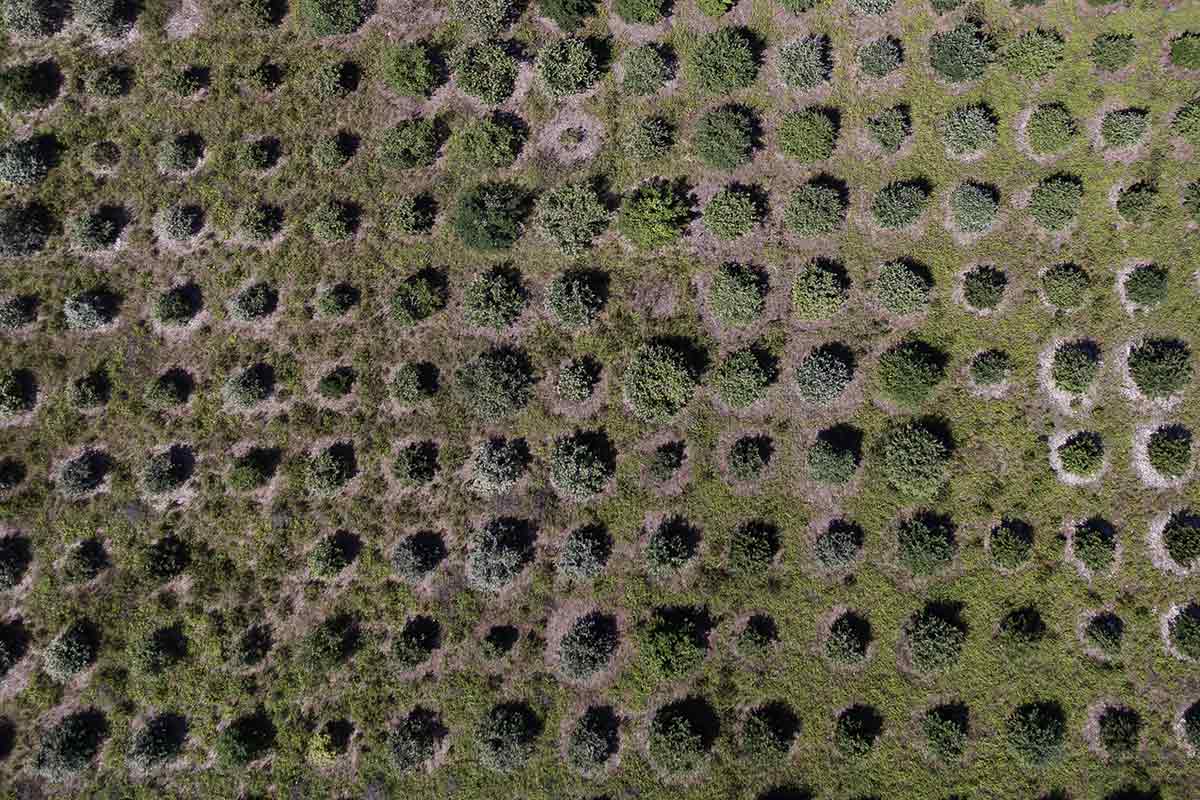TRUFFLE CULTIVATION
Truffle cultivation
The fact that truffle plants can indeed be cultivated always arouses a lot of curiosity. It is essential to remember that truffles are underground mushrooms that live in symbiosis with some plants. Each type of truffle prefers a certain type of plant and a certain type of soil.
The following are the essential steps and elements for starting a truffle ground.

truffle grounds-nerobio-alto
– SOIL ANALYSIS
There are various factors to consider before selecting a land for the cultivation of truffles.
It is essential to carefully evaluate the composition of the soil, the exposure and the altitude of the soil, the macro-micro climatic factors, the distribution of rainfall over the course of twelve months, and, finally, the temperature levels throughout the different seasons. After these evaluations, it is necessary to establish whether the soil is suitable for the cultivation of one or more species of truffles, and this is done by taking soil samples to be subjected to chemical-physical analysis. Soil analysis is a crucial element in determining the right plant-truffle combination. We must not forget, in fact, that every truffle lives in symbiosis with particular types of plants and that not all species have the same needs in terms of climate, soil, habitat, water availability.
– SPECIES TO CULTIVATE
Not all truffle species are suitable for cultivation. There are, in fact, species such as the Black Fine Truffle or the Summer Truffle that can be successfully cultivated in Italy, whereas, some other species, such as the White Truffle, result more complicated to cultivate. In fact, as of today, the success rate for the cultivation of the latter is almost equal to zero.
– MYCORRHIZED PLANTS
The truffle is a symbiotic mushroom, that is, it lives in symbiosis with the host tree. To create a truffle ground it is therefore essential to use mycorrhized plants, whose roots, that is, have already been colonized by the spores of the truffles that you wish to implant. This delicate procedure is carried out in specialized plant nurseries. Among the plants that can be successfully used in truffle cultivation are the Downy Oak, the Cerro, the common Oak, the Holm Oak, the Hazelnut, the Black Hornbeam, the White Hornbeam, the Linden, the Domestic Pine, the Aleppo Pine, the Beech, the Red Rock Rose, the Willow and the Poplar.
– PATIENCE
Starting a truffle ground requires patience and dedication. It is not guaranteed that fungus and plant maintain, over time, that symbiotic relationship necessary for the production of truffles and, in any case, it will take 6 to 10 years before being able to collect them.
– MAINTENENCE
There are several theories on the method of maintaining a truffle ground. Some simply let the plants grow and create a small wood. Others, like us, work the soil around the plants every year and keep the plants like bonsai by pruning them. The pruning of mycorrhized plants is necessary to regulate the level of soil shading and to stimulate the emission of new shoots and new rootlets. The periods of the year during which is best to carry out this kind of processing obviously depend on the species of the truffle that is cultivated.
– IRRIGATION
Irrigation can be done manually or through an ad hoc irrigation system. Once the truffle ground starts producing truffles, irrigation will help maintain a good production over the years.
FUN FACT: a clue as to whether the plants have entered production is given by the “burnt” or “pianello”, an area under the canopy devoid of herbaceous vegetation.

